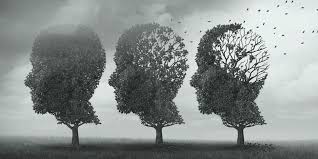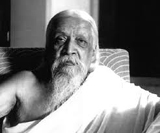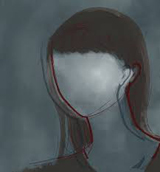Notes on counselling
Dissociation of consciousness — implications in psychology and yoga
Abstract
Dissociation of consciousness is not only a psycho-pathological construct but has cultural and spiritual connotations too. While clinical psychology would explore multiple personalities resulting from dissociation, a consciousness perspective would reach beyond multiple self-states at the outer being to an Unitary Self deep within that transcends the ego.
It is well known that an aspect of consciousness can become dissociated at times. In other words, there can be a temporary alteration in the integrative functions of awareness or identity. The part of consciousness dissociated from the dimension of awareness can create a sort of third reality where fantasised elements can be projected in terms of objectivity. Such a reaction can occur as a response to emotional conflicts or internal or external stress.
Culture- friendly disssociation
Yet, certain dissociative states may not be necessarily viewed in a pathological way. There are dissociative states which have cultural implications. Thus, the phenomenon of dissociation is perceived in altered states of consciousness where subjects jump on a bed of nails, self-harm themselves, walk through fire and even develop weals and petechiae (in episodes marked as stigmata of Christ) during intense religious fervour. Such feats are executed in the famous Kumbha Melas (great religious fairs held periodically) in India. What is exceptional is that during these episodes there is no pain or bleeding, a phenomenon probably mediated by endorphins. Typically such culture-friendly episodes are short lasting and when the subject comes back to the usual mode of life, he or she is again subject to pain and bleeding. There is also no blackout of memory of the altered states for the subject remembers everything though emotionally highly charged.
Adaptive dissociation
Then there are some dissociated states which act to safeguard the body and mind during intense crisis. In such cases, dissociation becomes adaptive and allows people to trance out or go into a neutral gear. It can allow the subject to act as a spectator of the disaster without experiencing pain or agony. The ICD-10 classification of Mental and Behavioural Disorders by the WHO treats such cases of calm acceptance (belle indifference) of crisis situations rather cursorily but it needs a deeper probing. Studies of mountain climbers who survived potentially lethal falls showed that those who fell from great heights were unaware that their limbs had broken until they attempted to stand (1).
A similar situation was observed when a devastating fire started at the Upahaar Cinema in Delhi on 13 June, 1997. In an article published in this journal, it was revealed that a section of the audience who were destined to perish but somehow survived miraculously, reported that they were somewhat detached and were invoking Krishna’s presence, oblivious of consequences in personal and familial spheres (2).
Thus dissociation of consciousness can allow subjects to be calm, detached and depersonalised at times of intense life-threatening situations. In fact those who did not experience such adaptive dissociation were more vulnerable to psychopathology. However such episodes of dissociation are adaptive if they disappear after serving their purpose. Howell explains that if such dissociation persists automatically over time, long after the crisis has passed away, there can arise the development of Post-Traumatic Stress Disorder (PTSD) in later life (3).
It can be argued that people practising yoga or working on a consciousness trajectory of personal growth could remain calm and detached in the face of impending disaster. While we can assume that as this event occurred in India where practising Yoga is not uncommon, some spectators could have attained a detachment by consciously shifting to an inner poise; it would be naïve to assume that most of the spectators in the cinema were yoga adepts. Instead, a different physiological phenomenon seemed to have taken place.
Researchers conventionally explain the reaction to stress in terms of arousal mediated by the sympathetic nervous system that results in elevated heart rate, energy expenditure and anxiety, enabling the fight or flight response. However, in a situation where the subject knows that death is imminent, such hyperarousal would not be beneficial and would actually exasperate the subject. Instead, a phenomenon of hypo-arousal, mediated by the dorsal vagal activation would result in some sort of immobilisation. This response is not new, it is an older functional system that is adaptive for reptiles. As such hypo-arousal state, if stretched for longer periods, might be damaging to the mammalian nervous system, it was replaced by the hyperarousal mechanism during evolutionary progression. However when hyperarousal is no longer protective, the organism can fall back on the older hypo-arousal system (4).
It can be speculated that such physiologically hypoactive states may be functioning in dissociative states during intense life-threatening crisis so as to enable a greater coping with adversity. The hypo-arousal state can be consciously cultivated through consciousness-based yoga practices. However, the automatic hypo-arousal if prolonged can be detrimental to the mammalian nervous system. But a conscious state of hypo-arousal wilfully cultivated through yoga can help to construct a veritable defence, allowing a subject to remain in calm and equipoise amidst intense adversities. In fact, such practices could be included in the repertoire of coping strategies used in disaster-prone areas.
Dissociative amnesia
A 16-year-old boy hailing from a low socio-economic background in an Indian city was scheduled to appear for his school leaving board examinations but on the first day of his examinations, he was nowhere to be found. He was finally discovered at the back of his house with his hands tied at his back and multiple bruises on his lower abdomen which were not deep enough to penetrate the skin. He had no memory of what had happened to him. Surprisingly this was not the first year he failed to appear for his board examinations. This phenomenon had occurred too during the last two years when he also missed his examinations. Two years back, he had severe convulsions on the first day of his examinations. One year back, he developed fatigue and fever just prior to his examinations.
This was a classical case where the phenomenon of dissociation presented in different ways for three consecutive years that successfully made him avoid the enormous stress of the board examinations. The first time he had pseudo-seizures. The second time he had a somatoform disorder which is closely linked with dissociative disorders, the only difference being that the dissociative disorders affect specifically the motor and sensory systems while somatoform disorders present physical symptoms without any organic base (5). The third time he had appeared not only with a dissociative amnesia but a dissociative trance state preceding the amnesia where he had bruised and tied himself in an altered state of consciousness.
This boy hailed from a family who were illiterate and he was the first one ever who was scheduled to appear for the board examinations. There was a tremendous build-up of anxiety coupled with high familial expectation, because in such a background the family’s social status and prestige would rise if he could pass the examination. The boy was a slow learner and could not cope with the ensuing stress of performance.
Such dissociative states that can be traced to traumatic situations are often encountered in psychiatric practice.
Dissociative identity and multiple self-states
In a case of dissociative amnesia, a certain self-state has been pushed aside for events that had occurred while another self-state comes in front. We frequently find in clinical practice patients who have forgotten one or other important aspect of life while other aspects of life continue. There seems to be some sort of switching that allows one self-state to come forward in lieu of another self-state. Thus a young lady with a small child suddenly could not recognise her in-laws (she was married into a joint family where besides her husband, she had to live with her husband’s parents and siblings). She was taken to her family of origin where she fared better but the selective amnesia persisted. She revealed to her therapist that she did not want to stay with her in-laws as they had often dealt contemptuously with her. She however dealt with her husband quite maturely while she stayed with her own biological parents.
This brings to a pertinent question: do we possess one continuous unitary self or are we a conglomeration of multiple self-states? Current consensus in neurobiology, cognitive psychology and developmental psychology seem to suggest that the self in us is not unitary but consists of multiple self-states that emerge and alternate in accordance with which self-state is in the forefront of consciousness at a given time. No particular self-state can be labelled as the original personality. At any particular time, one or other self-state is in executive control. If these self-states are contextually interrelated, we may say we are in healthy control of ourselves. If there is a disassociation between these self-states, we can have Dissociative Identity Disorders (6). If this dissociation is extreme, then the manifestation presents as Multiple Personality Disorder. Fortunately, all dissociative states do not clearly differentiate into Dr. Jekyll and Mr. Hyde prototypes, so we tend to think that Multiple Personality Disorder is rare. In reality, milder versions of Dissociative Identity Disorder are far more common than thought. Therapists need to work to help patients understand that dissociated identities are part of oneself rather than pertaining to a delusional sense of separateness.
Often traumatised children may experience a dissociative self-state by inventing an omnipotent inner care-taker or protector. As such protectors are experienced as real, frightened parts may be highly attached to them creating an “inner world” or third reality (7). Thus one 7-year-old girl who was burdened with parental separation could not cope with either her mother, with whom she was staying or with her father, who lived separately. Her father tried all sorts of tricks to disturb the mother and child from outside and even consulted occultists to devise some ingenious sorcery to disturb their harmony. The mother herself suffered from depression and impulse control disorder and could not handle the child alone; she was aided by her own mother in bringing up her child. In this precarious milieu, the child suddenly declared that she had a “wise mother” inside her who was guiding her to take correct decisions and who also described a harmonious past-life of the child in graphic terms. It was only after a year of intense counselling that she could come out of this predicament.
A consciousness perspective
In the consciousness perspective, the structure of the being that emerges from Sri Aurobindo’s vision holds multiple dimensions. What is studied as the personality in conventional psychology is the outer or surface being in the psychology of Integral Yoga. The outer being does not present a faÇade of unity but is actually a conglomeration of multiple self-states arising from the physical, vital and mental planes of consciousness and their various combinations. The outer being rotates around the ego which is skewed to one or other self-state and thus cannot achieve an ideal harmony. Psychotherapeutic techniques that work to facilitate inter-relations between different self-states can only achieve compromises but cannot attain dynamic healing.
Bromberg, a votary of multiple self-states, argues against the concept of an integrated self: “I argue that there is no such thing as an integrated self — a ‘real you’….health is not integration. Health is the ability to stand in the spaces between realities without losing any of them. This is what I believe self-acceptance means and what creativity is all about — the capacity to feel like one self while being many (8).”
Contrary to the proponents of the theory of multiple selves, there is actually a real self of integration, unity and harmony supporting the being from the fourth dimension and is itself a projection of the Unborn Self or Jivatman in the matrix of the being. The quintessence of Integral Health is to shift from the consciousness of the multiple self-states to this integral self or soul-principle or psychic being that surpasses the ego (9). Since the multiple self-states are interspersed at the outer being, they need to be de-linked before they can be integrated around the ego-surpassing soul-principle. This de-linking can only be perfectly executed in the inner being that stands behind the surface personality.
In between the outer structure of multiple self-states and the inmost soul-principle of integrality, there is an inner or subliminal dimension of the being in connection with the cosmic consciousness. This inner being is not supported by the ego but by the inmost integral self or psychic being.
The multiple self-states cannot be properly separated from one another in the outer being where the planes of consciousness are interspersed with each other; they can only be properly delineated in the inner being so that they can become ready to be integrated, not around the ego but around the soul-principle.
In India, a section of yogis have perfected the technique of developing the different planes of consciousness with such clarity in the inner being that they can be construed as separate entities though linked with the soul-principle. As the inner being is connected with the cosmic consciousness, these separate entities can materialise as separate personalities at different points in space and time. Paramahansa Yogananda in his famous book, Autobiography of a Yogi, has chronicled such real-life cases and commented, “The power of appearing in more than one body is a siddhi (yogic power) mentioned in Patanjali’s Yoga Sutras (10).” Unlike the multiple personalities which are pathological expressions of dissociated self-states, the yogi can be present in multiple bodies at multiple locations with the same personality (though one aspect of consciousness may be more discernible than others) and yet without losing the link with the central soul-principle.
Dissociation of consciousness is thus a complex issue with dissonances between multiple self-states, manifesting not only at different planes of consciousness but also from different levels of the being and ranging from the cultural to the spiritual with a psychopathological aetiology in between. A mere integration of different self-states at the outer being has limited value unless the integration is done at a deeper level, shifting the centre of integration from the ego to the soul-principle or unitary Self.
References
1. Dell PF. Understanding dissociation. In Dell PF, O’Neil JA (eds). Dissociation and the Dissociative Disorders: DSM V and Beyond. New York: Routledge; 2009, p. 761.
2. Basu S, Pandey, A. Reflections on the Upahaar Cinema Tragedy. NAMAH 1998; 5 (2): 67-69.
3. Howell EF. Understanding and Treating Dissociative Identity Disorder. New York: Routledge; 2012, p. 79.4. Ibid., pp. .121-2.
5. Thapar A et al (eds). Rutter’s Child and Adolescent Psychiatry 6th ed. UK: Wiley Blackwell; 2015, p.1035.
6. Howell EF. Understanding and Treating Dissociative Identity Disorder, p. 7.
7. Ibid., pp. 139-40.
8. Bromberg PM. Standing in the Spaces: Essays on clinical process, trauma and dissociation. Hillsdale, NJ: Analytic Press; 1993, p. 166.
9. Basu S.: Integral Health. 2nd ed. Pondicherry: SAIIIHR; 2011.
10. Yogananda Paramahansa. Autobiography of a Yogi. 3rd Indian Paperback ed. Kolkata: YogodaSatsang Society of India; 2006, p.24 (footnote).
Dr. Soumitra Basu, a practising psychiatrist and member of SAIIIHR, is the Director of a school of psychology, Integral Yoga Psychology. He is also one of the editors of NAMAH.
Share with us (Comments,contributions,opinions)
When reproducing this feature, please credit NAMAH,and give the byline. Please send us cuttings.







